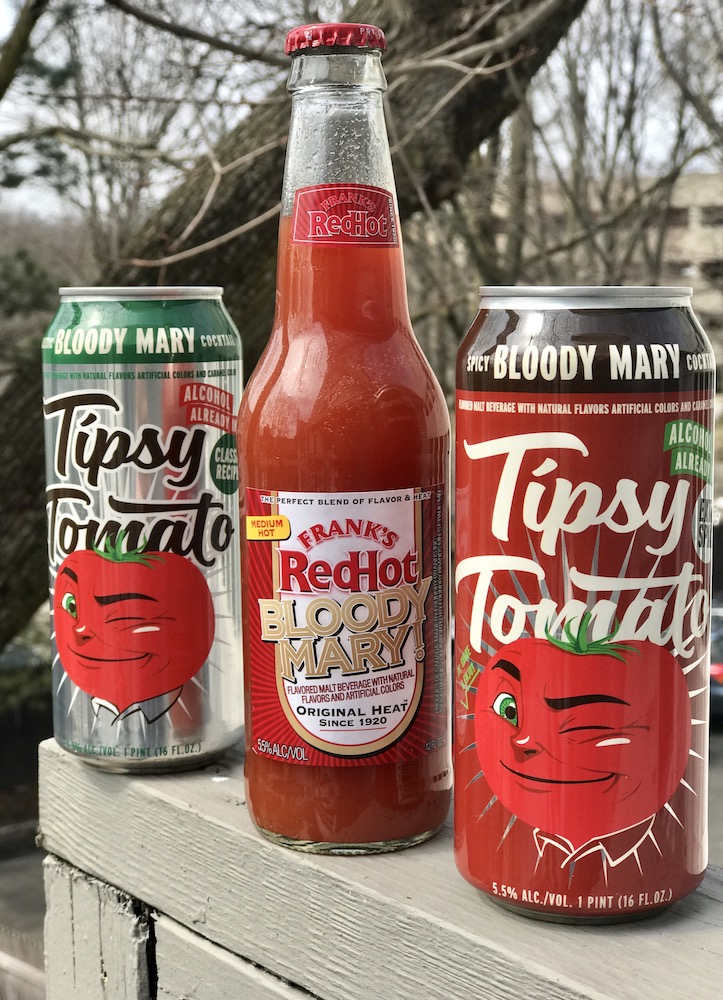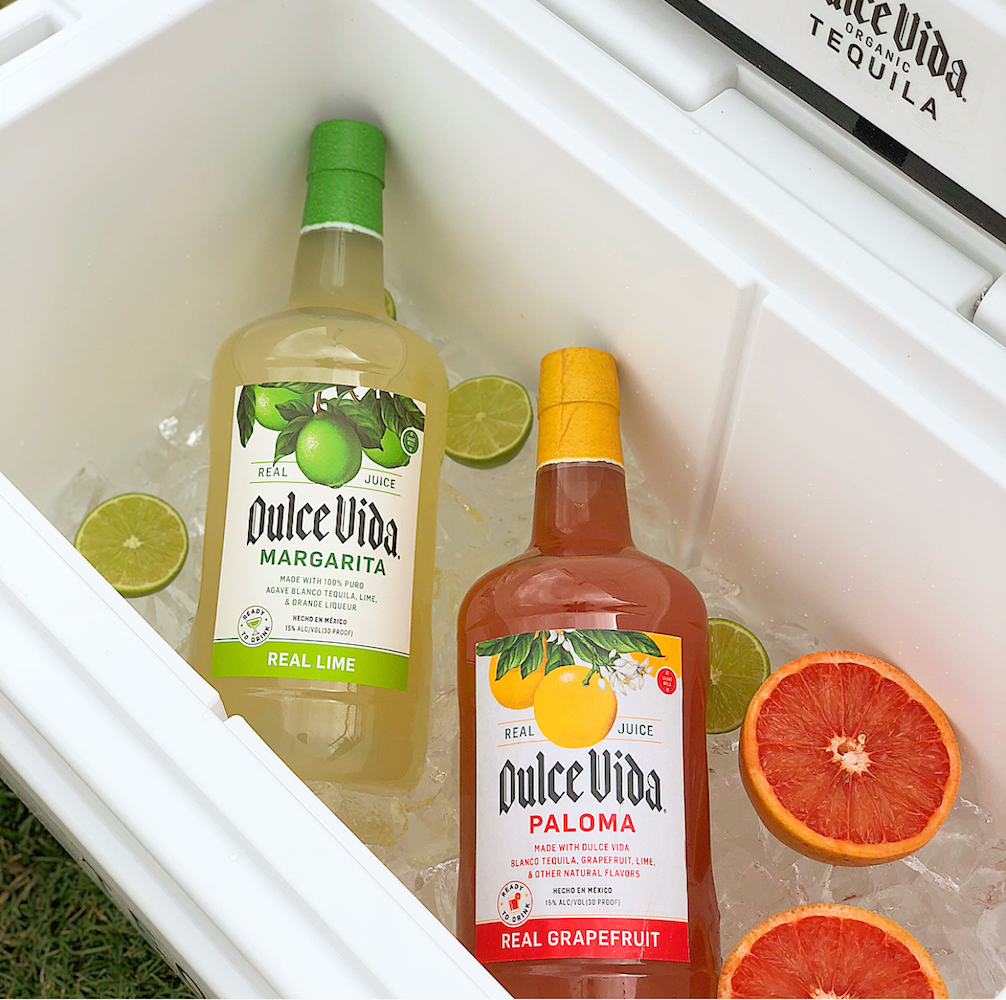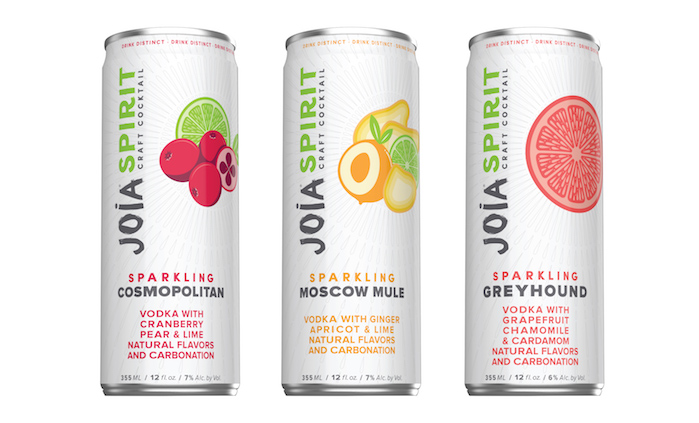The ready-to-drink (RTD) category has come a long way from cheap, sugary, pre-packaged cocktails commonly found on the bottom shelf. From these humble beginnings RTDs have evolved by embracing the craft movement. Now these products play in the premium space, letting consumers know that the category aims for higher quality.
The result has been significant growth.
“The RTD category has grown 28% in the past 28 weeks,” says Mike Morgan, president of Prestige Beverage Group, which distributes both the Joia Spirit and Kinky Cocktails lines of RTD mixed drinks. “We really think this is going to explode. We think we’re right on the cusp of it.”
Agreeing with him is Eric Dopkins, CEO of Milestone Brands, which recently launched the Dulce Vida Paloma and Margarita RTD cocktails. “We’ve seen a lot of success out of the gate,” he reports. “We launched in the last 30 days, and have already achieved our 2018 goals.”

So what’s behind this success? Who are the consumers snapping up RTDs? The answer, according to the suppliers and producers, is broad appeal with niche products.
“People today, particularly millennials, are looking for innovation and quality,” explains Bob Safford, founder of Boundary Waters Brands and Joia Spirit. The brand lineup currently includes a Sparkling Cosmopolitan, Sparkling Greyhound and Sparkling Moscow Mule cocktail. “The difference we’re bringing is the next evolution of the craft spirit. We’re taking that trend and putting it into today’s ‘convenient lifestyle.’”
Safford sees people drinking his products while out on a boat, at a park or on a porch during a party — wherever alcohol is legal — as part of their on-the-go lifestyle. Joia Spirit fits in as a craft cocktail that’s also convenient.
“People today are looking for things to be fast,” Morgan adds.
The sweet spot for Joia’s demo is consumers aged between 25-35 years old, according to Safford. The demo skews towards female, 60/40, though the brand has had success with men with the Moscow Mule cocktail.
Another area where RTDs can claim market share is with the slowdown in craft beer’s growth. So believes Wes Lewis, CEO of Ennoble Beverages, which is behind the new malt-based canned Bloody Mary RTD called Tipsy Tomato.
“We know that beer distributors and sellers have experienced losses as more consumers move towards wine and spirits,” Lewis explains. “We think we can help bring those consumers back. All demos like a Bloody Mary.”
And Tipsy Tomato is more of an occasion-based product than craft beer, Lewis believes. A group of buddies golfing may not want to be seen on the links drinking beers during the morning hours. “But nobody looks down on you if you’re drinking a Bloody Mary in the morning,” Lewis says.
Tipsy Tomato may also help relieve the repetitive burden of craft beer SKUs. Lewis brought his product to the most recent NBWA conference, where he sampled it from his booth. “These distributors already have 50,000 beer SKUs,” he says. “They sampled what we have and said, ‘Hey, this is something new. Where can I get it?’”
Safford of Joia Spirit has seen this as well. “We’ve been validated by retailers,” he says. “We help their value proposition by providing the variety that can help target consumers.”
Premium Trend
RTDs would never be able to compete with craft beer, or most modern alcohol products, if they could not match these liquids in quality. The craft and premiumization trends have permeated into every category in the alcohol industry. That means that RTDs can no longer afford to be sugary, inexpensive products.
Not many RTDs want to return to their past levels in quality; they aim higher.
“We’re using real fruit in Dulce Vida,” says Dopkins of Milestone Brands. “We’re using 100% Blue Weber agave.”
Of course, achieving higher quality does not come without complications. Dulce Vida must produce and bottle its product entirely in Mexico, since legally that’s how they must package a drink that contains authentic tequila.
“The reality is that no other brands are using these types of real ingredients for tequila cocktails,” Dopkins says. “The consumer today wants fresh products of higher quality, and that’s what we’re bringing them.”
Dulce Vida is currently only in a handful of states, though Dopkins imagines a greater roll-out in the near future. Right now the product comes in 1.75-ml. bottles, which is the “traditional” size for RTDs. These are meant for BBQs, camping and entertaining. Milestone Brands did not have the time to create a smaller format yet, but Dopkins expects that next. “I see us at outdoor venues and music venues.”
The higher quality of RTDs extends into the entire experience. Safford says that the team behind Joia Spirit spent a lot of time on the product’s aromatics. “It’s a huge part of the taste,” he says. “People crack open one of our canned cocktails, the Greyhound especially, and have this really amazing aromatic experience. People understand that.”
For taste, Safford infused Joia Spirit with unique flavor combinations for a twist on traditional cocktails. “Today’s consumer wants more-interesting flavors,” he said. That’s why you’ll taste cardamom in the brand’s Greyhound cocktail, for instance.
After all, how many consumers have this Indian spice sitting around their kitchen, ready to mix into batches of cocktails for parties? “People don’t want to have 17 ingredients at home to make mixology-level drinks,” Safford says. “We deliver that experience in their home, in a smaller format.”
Canned Cocktails
Part of what has fueled the rise of premium RTDs is the shift in consumer acceptance towards premium products coming in canned formats.
Craft beer has led the charge in this changing attitude. Not that many years ago, the best beers came in larger-format glass bottles. While these bombers have not gone completely extinct — many premium-level brews still ship in bigger bottles — the beer industry has seen a significant rise in canned premium products in 4- and 6-packs.
Consumers no longer think twice about paying $14-$20 for a canned 4-pack of high-quality IPA or stout. Any lingering stigma towards this format as containing cheaper products is just about gone.
“Our distributors told us that they need our product in a can,” says Lewis of Tipsy Tomato. “Everybody is marketing towards cans now.”
Ennoble is also behind the Frank’s Red Hot Bloody Mary RTD, which comes in a glass bottle that reflects the iconic hot sauce’s pack-aging. Ennoble had wanted to release a canned version of that same drink, but Frank’s was hesitant to move away from their traditional glass format.
So Ennoble created its own canned product. And now Lewis believes the “Tipsy” brand can come out with even more versions of canned cocktails.
The technology is there. Years ago companies would invest considerable time and money figuring out a reliable way to can cocktails, but today all that prior research has resulted in a reliable format. “Tech is no longer an issue,” says Safford of Joia Spirit.
Everything is now canned, including wine and sparkling waters. To help stand out among this movement, Joia Spirit went with slimmer packaging. “It’s appealing to women and easier to hold,” Safford says.
Consumer Education

What’s new can also be confusing for consumers. Not all people understand exactly what’s going on in that canned cocktail they picked up. They may believe that it contains only a cocktail mixer, which requires that they pour it into a glass with alcohol added.
Which is why when you read the side of a can of Tipsy Tomato, you’ll see clear instructions. “Alcohol in here already,” the can educates consumers. The label also notes that people should “Shake me and enjoy me,” because the tomato component of the drink will separate.
“Consumer education with RTDs is critically important,” Lewis says.
A veteran of the alcohol industry who once worked with Pete’s Wicked Ale, Lewis compares modern RTDs with the first time consumers tasted craft beer. “People didn’t know what craft beers were at first,” Lewis says. “We had to come up with a way to educate people about what to expect when they opened a bottle.”
He approached RTDs the same way. Consumers are willing to try something new, so Lewis “put enough information on the label so that Tipsy Tomato was totally approachable.”
Sampling is also important. Ennoble sends out brand reps who are knowledgeable about the product to lead tastings, getting liquid to lips, and answer any questions consumers have about the RTD.
What’s Next
“We’ve looked at the growth of products in alternative packaging,” Morgan says, “and RTD cocktails in the last six months have been the fastest-growing within alternative packaging. Even more than canned wine.”
So retailers should expect more RTD mixed drinks to hit shelves in the coming months and years.
Ennoble has been working with the TGI Friday’s restaurant chain on a line of branded RTD cocktails. Initial plans are for these drinks to include TGI Friday’s take on the Long Island Iced Tea, Black Berry Iced Tea and Moscow Mule. The target launch date is this August.
“I’ve been in the business a long, long time, but have never seen anything quite like this,” he says. “We’re so inundated by consumers today looking for something new.”
Kyle Swartz is managing editor of Beverage Dynamics magazine. Reach him at kswartz@epgmediallc.com or on Twitter @kswartzz. Read his recent piece 4 Emerging Imported Whisky Brands.





[…] RTD cocktail category in the United States is growing significantly. In the 28 weeks leading to July 2018, the category grew by […]